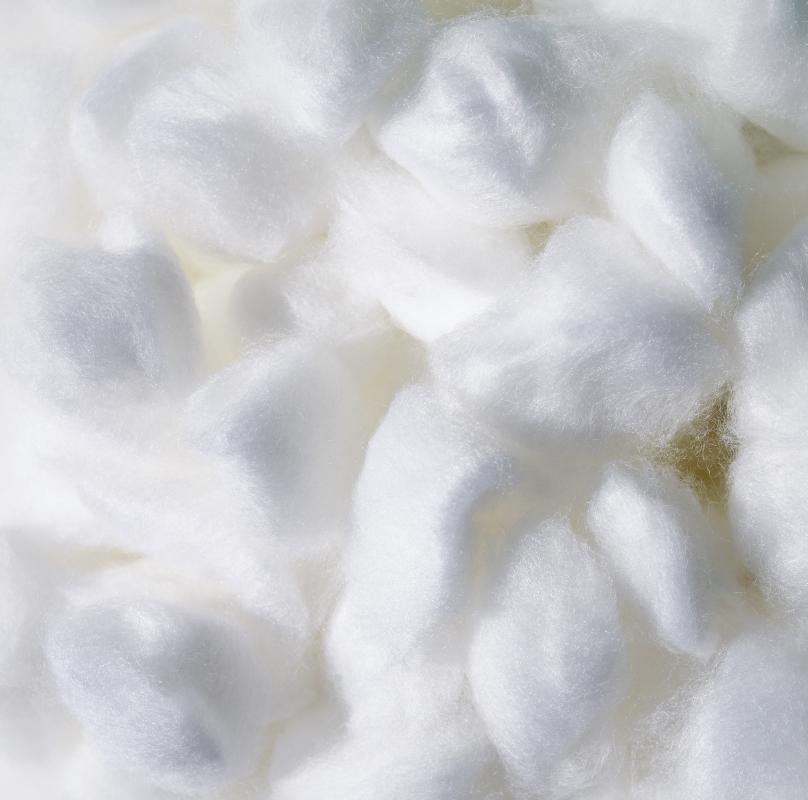At TheHealthBoard, we're committed to delivering accurate, trustworthy information. Our expert-authored content is rigorously fact-checked and sourced from credible authorities. Discover how we uphold the highest standards in providing you with reliable knowledge.
How Do I Treat a Belly Button Infection?
The two types of belly button infections are bacterial infections, caused by a piercing or a scratch during cleaning, and yeast infections. Regardless of the type of infection, the treatment is quite similar. An infection should be treated by gently cleaning the area with a saline solution, drying the area, and then applying either a water-based anti-fungal or antibacterial cream. If the infection hurts, warm compresses can be placed on the belly button to relieve the discomfort.
A bacterial infection in the belly button can be caused by a body piercing or by accidentally scratching the belly button during cleaning. It may be accompanied by redness, mild pain, and green or gray discharge. To treat the infection, you should clean the area with a mild saline solution using cotton balls, carefully dry the area, and apply a water-based anti-bacterial cream. Stubborn discharge can be cleaned away with hydrogen peroxide. If the infection is still present a day or two after treatment, becomes severely swollen, suddenly painful, or is accompanied by a fever, you should immediately see a healthcare professional.

Yeast infections in the belly button usually produce a bad smell and some pus, and may be accompanied by itching, burning, or mild pain. To treat this type of belly button infection, once or twice a day you should gently clean the belly button with a mild saline solution using a cotton ball. This solution can be purchased ready-made in most drug stores or can be made at home by placing 1 teaspoon (6 g) of salt in 1 cup (236.5 ml) of warm water and mixing until the salt dissolves. After cleaning, you need to dry the area carefully but thoroughly with a clean towel, never reusing cotton balls or dirty towels. You should try this for a few days and if the infection does not clear up, add a water-based anti-fungal cream to the regimen following the drying.

To avoid a yeast infection, you should gently clean the belly button everyday with a mild soap. Yeast grows and thrives in moist dark places, so the navel should be carefully dried following a shower or bath. You can prevent a bacterial infections by cleaning the belly button gently so the skin is not aggravated or scratched. To prevent an infection from a body piercing, you should go to a reputable, clean business and follow all care guidelines after the procedure.
AS FEATURED ON:
AS FEATURED ON:















Discussion Comments
I have recurrent yeast infections in my navel and ears due to two factors, (1) psoriasis which creates a wonderful environment of lots of skin on which the micro-organisms can feed, and (2) I deployed to the Amazonas region of Colombia when I was in the Air Force and picked up some strong fungal organisms there.
I've never had my belly button pierced. I periodically do get mild infections in my navel area, but that just tells me I don't clean it often enough. Either it may be overlooked when I'm taking quick showers or whatever. They clear up quickly just from keeping the area clean with soap and water.
I have had an infection in my belly button for months. I used salt water to clean it and although it starts to get better, it gradually goes back to how it was before (a little worse). Is this normal and are there any other ways to get rid of it? I really don`t want to go to the doctors and have had it for months.
I got my belly button pierced in 2011 and it's 2013. Now my belly button got infected but I didn't see a doctor about it and now it's closed with a scar now. What should I do? I need help. Please somebody answer.
A newborn should not be bathed in a tub until after the umbilical cord has fallen off, it increases risk of infection.
The piercing started to ooze a foul smelling pus. I tried antibacterial cream and that didn't work. Eventually, I went to the doctor. He had me take the piercing out and use antibiotics. The belly button discharge stopped in a few days and my belly button healed completely in about a week.
I didn't think about getting the piercing again after that. I don't know why this happened. I have friends who got belly button piercings without problems. But I heard that a belly button infection can spread to internal organs if it's not treated. I don't think that a piercing is worth this risk.
Post your comments